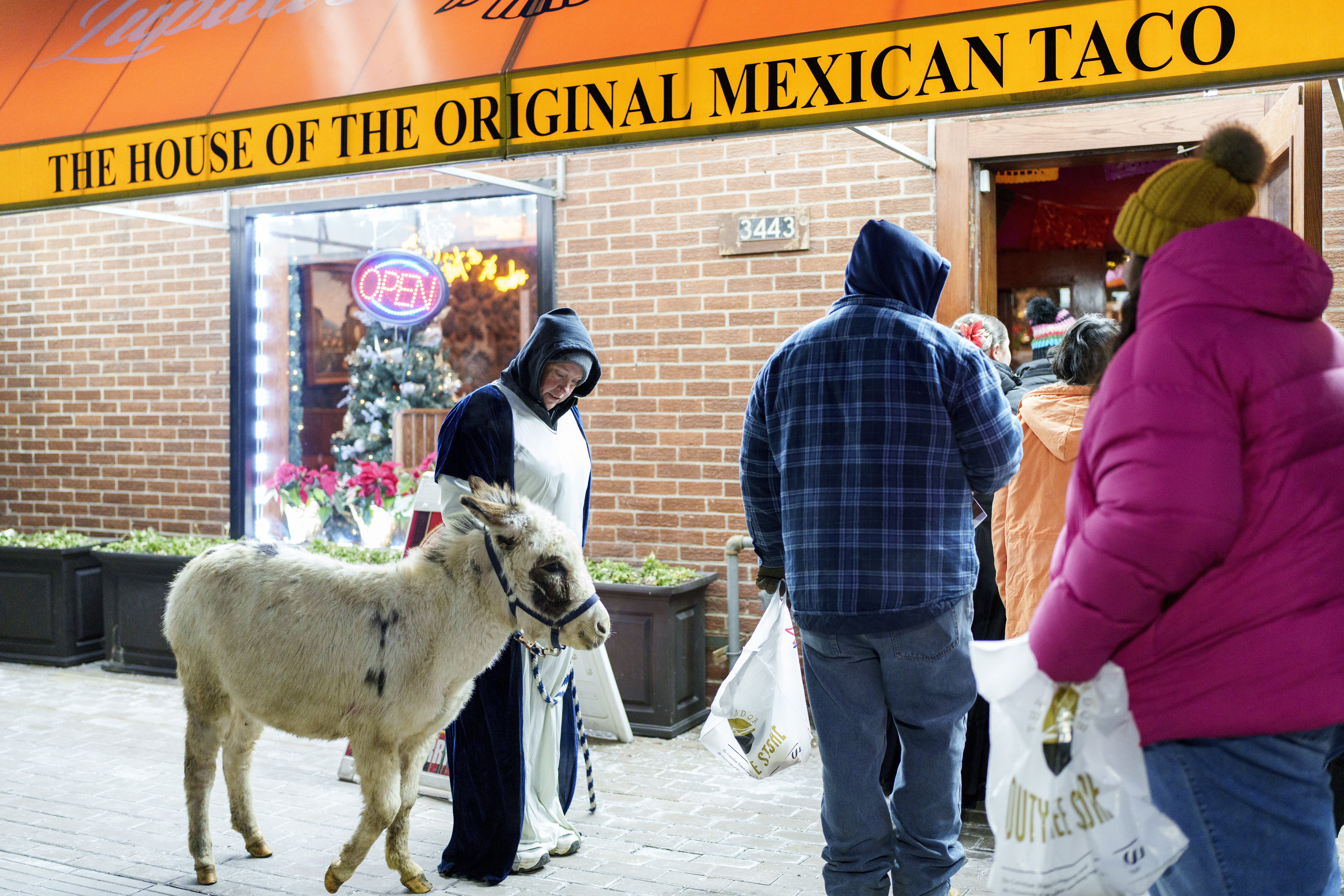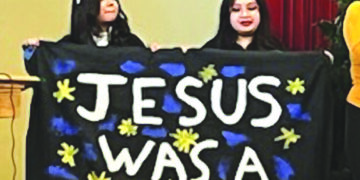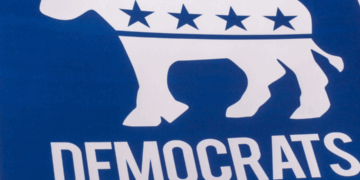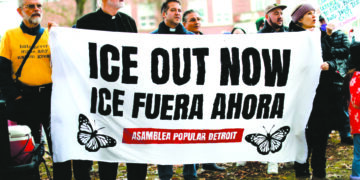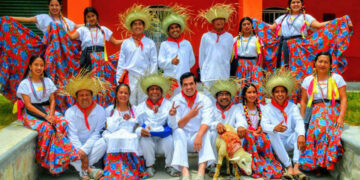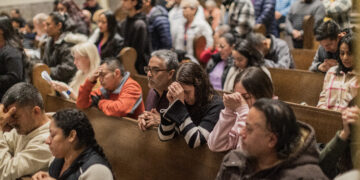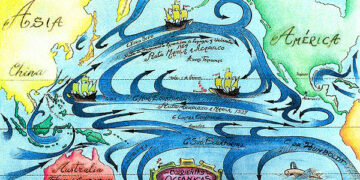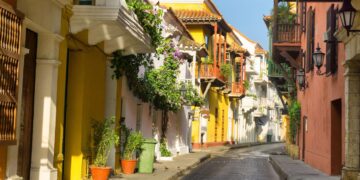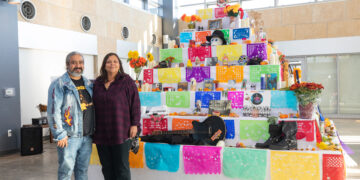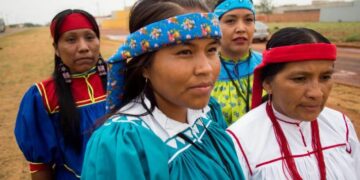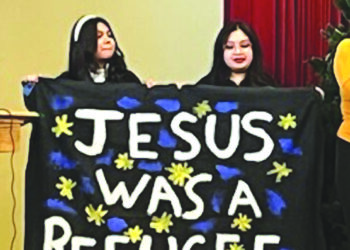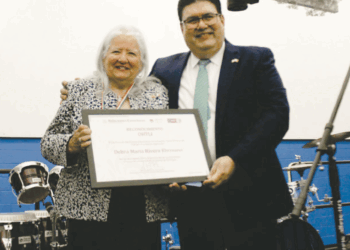La Semana Santa en latinoamérica es una de las actividades más importantes de la cultura, pues siendo una región católica, la conmemoración de los últimos días de la vida de Jesucristo, que es cuando se cumplió la profecía de Isaías en la que hablaba sobre la venida del Mesías, el príncipe de paz, quien resucitaría al tercer día después de morir para salvar de los pecados a la humanidad.
Estos días santos que comenzaron el domingo pasado, Domingo de Ramos, cuando entra Jesús a Jerusalén y lo reciben con ramos de olivos como reconocimiento por haber sobrellevado los cuarenta días en el desierto afrontando las tentaciones de Lucifer. En la actualidad, se conmemora a partir del miércoles de ceniza para llevar a lo que llamamos la cuaresma.
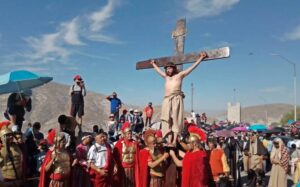
Hoy, Jueves Santo, es uno de los días más importantes, ya que suceden tres de los momentos más importantes:
Jesús sabe y se está preparando para el sacrificio por la purificación y absolución de los pecados, en este día, Jesús comparte su humildad a partir del gran símbolo, que es el lavatorio de pies, es decir, se reconoce como hijo de Dios más no como ser superior antes su hermanos, pues como durante su retiro en el desierto venció a Satanás quien le había ofrecido hacerlo rey del mundo, mas Jesús había rechazado tal propuesta, él quería llegar al cielo con su padre Dios. De esta manera, al lavar los pies de sus apóstoles hace testimonio de su servicio por el otro, por sus hermanos.
Más tarde sucede la última cena, cuando Jesús ofrece pan y vino a sus discípulos: “Éste es el cuerpo y la sangre de Dios”, como símbolo de su entrega y devoción.
Por la noche, cuando se van a orar al huerto de Getsemaní, Judas le da un beso a Jesús para que lo identifiques, entregándolo así para que Jesús sea arrestado. Judas lo ha vendido a cambio de 30 monedas de plata.

Una vez que Jesús ha sido arrestado lo llevan a visitar siete reyes o siete autoridades para que uno de ellos sea quien se ocupe de juzgarlo. Finalmente, Jesús es entregado a Poncio Pilatos, quien decidirá cuál será su destino. No obstante, Poncio Pilatos tampoco quiere lidiar con ello, mas no logra evadir la situación.
A la mañana siguiente frente a los judíos, se lleva a cabo el juicio. Poncio Pilatos les dice que él no encuentra que Jesús haya cometido algún delito, de manera que no hay razón para castigarlo. Y aprovechando que en la pascua judía se liberaba a un preso, Pilatos les dice que si quieren liberarlo a Jesús o que si prefieren liberar a Barrabás. Los judíos salvan a Barrabás.
Una vez que los judíos piden a Pilatos castigue a Jesús, empieza el Viacrucis, que es cuando lo azotan y le ponen la corona de espinas y un manto púrpura en símbolo de que es parte de la Realeza, es rey, tiene su manto y corona de espinas.
En latinoamérica, el viacrucis es de tal importancia que se lleva a cabo representaciones en ciudades y pueblos en las que hombres cargan sus cruces hasta el lugar en el que se llevará a cabo la crucifixión. Es importante saber que la conmemoración se lleva a cabo con actos realistas, sí reciben parte de la práctica de los azotes aunque sean sólo simulados.
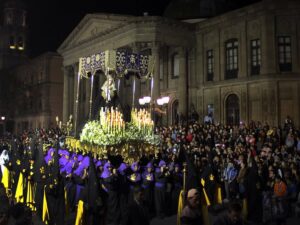
Jesús lleva su cruz camino al calvario, al llegar al monte de Gólgota lo crucifican como era la práctica en la cruz. Sin embargo, en aquella época no morían en la cruz, sino que los ataban a la cruz, que es como estaban dos ladrones uno de cada lado de Jesús. A diferencia de los dos ladrones, Dimas y Gestas, a Jesús lo crucifican con clavos, y en la parte de arriba ponen la inscripción que dice que es Jesús el nazareno, rey de los judíos.
Cuando Jesús está en la cruz, pide agua porque tiene sed, le dan vinagre. Cuando escupe el vinagre mira al cielo y exclama sus palabras que afirmaban que todo se había cumplida, no sólo eso, le pide a dios: “Padre, perdónalos, no saben lo que hacen”.
A las tres de la tarde, un centurión romano le clava en el costado izquierdo su lanza. Los cielos se cierra y se oscurece todo. Los ríos y mares se pintan de sangre. Jesús ha muerto. Lo llevan a su tumba, donde dejan su cuerpo a descansar. En la tarde del Viernes Santo, se lleva a cabo “La procesión del silencio”, para acompañar a la Virgen María en su pena por la pérdida de su hijo.
Al tercer día resucita Jesús, por lo tanto, el sábado por la noche se celebra el fuego nuevo que es la ceremonia más importante del calendario católico.
Holy Week
Holy Week is one of the most important activities in culture in Latin America, since being a Catholic region, the commemoration of the last days of the life of Jesus Christ, which is when Isaiah’s prophecy was fulfilled in which he spoke about the coming of the Messiah, the prince of peace, who would resurrect on the third day after dying to save humanity from sins.
These holy days that began last Sunday, Palm Sunday, when Jesus enters Jerusalem and is received with olive branches in recognition of having endured the forty days in the desert facing the temptations of Lucifer. Currently, it is commemorated from Ash Wednesday to lead to what we call Lent.

Today, Holy Thursday, is one of the most important days, since three of the most important moments happen:
Jesus knows and is preparing for the sacrifice for the purification and absolution of sins, on this day, Jesus shares his humility from the great symbol, which is the washing of feet, that is, he recognizes himself as the son of God but not as a superior being before his brothers, because during his retreat in the desert he defeated Satan who had offered to make him king of the world, but Jesus had rejected such a proposal, he wanted to reach heaven with his father God. In this way, by washing the feet of his apostles he testifies to his service for others, for his brothers.
Later, the Last Supper happens, when Jesus offers bread and wine to his disciples: “This is the body and blood of God,” as a symbol of his dedication and devotion.
At night, when they go to pray in the garden of Gethsemane, Judas gives Jesus a kiss so that he can be identified, thus handing him over so that Jesus can be arrested. Judas sold him in exchange for 30 silver coins.

Once Jesus has been arrested, they take him to visit seven kings or seven authorities so that one of them can judge him. Finally, Jesus is handed over to Pontius Pilate, who will decide what his fate will be. However, Pontius Pilate does not want to deal with it either, but he cannot avoid the situation.
The next morning in front of the Jews, the trial takes place. Pontius Pilate tells them that he does not find that Jesus committed any crime, so there is no reason to punish him. And taking advantage of the fact that a prisoner was released during the Jewish Passover, Pilate asks them if they want to release Jesus or if they prefer to release Barabbas. The Jews save Barabbas.
Once the Jews ask Pilate to punish Jesus, the Way of the Cross begins, which is when they whip him and put on him the crown of thorns and a purple mantle as a symbol that he is part of Royalty, he is king, he has his mantle and crown. of thorns.
In Latin America, the Way of the Cross is of such importance that performances are held in cities and towns in which men carry their crosses to the place where the crucifixion will take place. It is important to know that the commemoration is carried out with realistic acts; they do receive part of the whipping practice, even if it is only simulated.

Jesus carries his cross on the way to Calvary, upon reaching Mount Golgotha he is crucified as was the practice on the cross. However, at that time they did not die on the cross, but rather they were tied to the cross, which is how two thieves were, one on each side of Jesus. Unlike the two thieves, Dimas and Gestas, they crucify Jesus with nails, and at the top they put the inscription that says he is Jesus the Nazarene, king of the Jews.
When Jesus is on the cross, he asks for water because he is thirsty, they give him vinegar. When he spits out the vinegar he looks at the sky and exclaims his words that affirmed that everything had been fulfilled, not only that, he asks God: “Father, forgive them, they do not know what they do.”
At three in the afternoon, a Roman centurion stabs him in the left side with his spear. The heavens close and everything darkens. The rivers and seas are painted with blood. Jesus has died. They take him to his grave, where they leave his body to rest. On the afternoon of Good Friday, “The Procession of Silence” is held to accompany the Virgin Mary in her grief for the loss of her son.
On the third day Jesus resurrects, therefore, on Saturday night the new fire is celebrated, which is the most important ceremony in the Catholic calendar.

